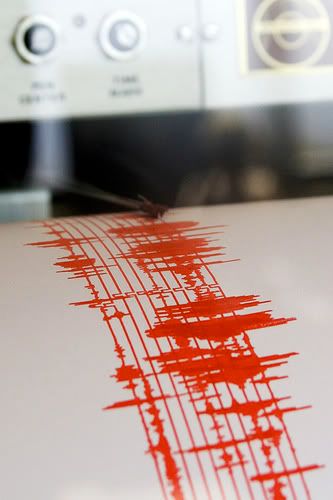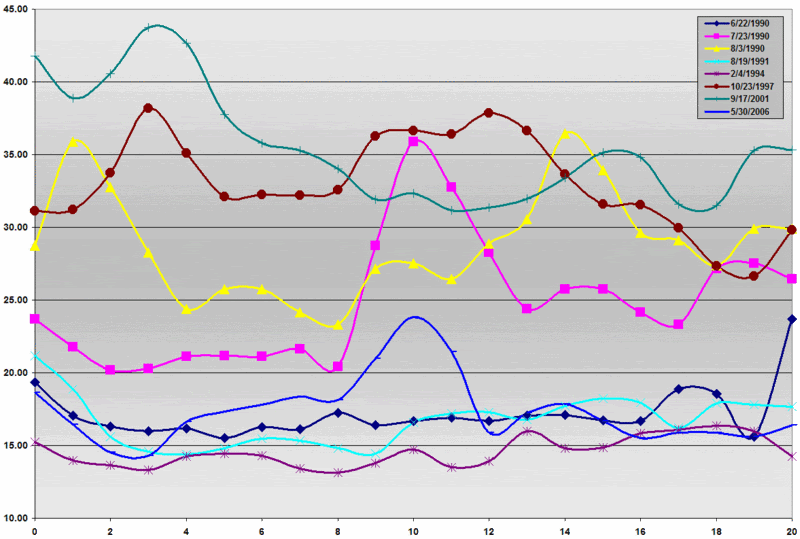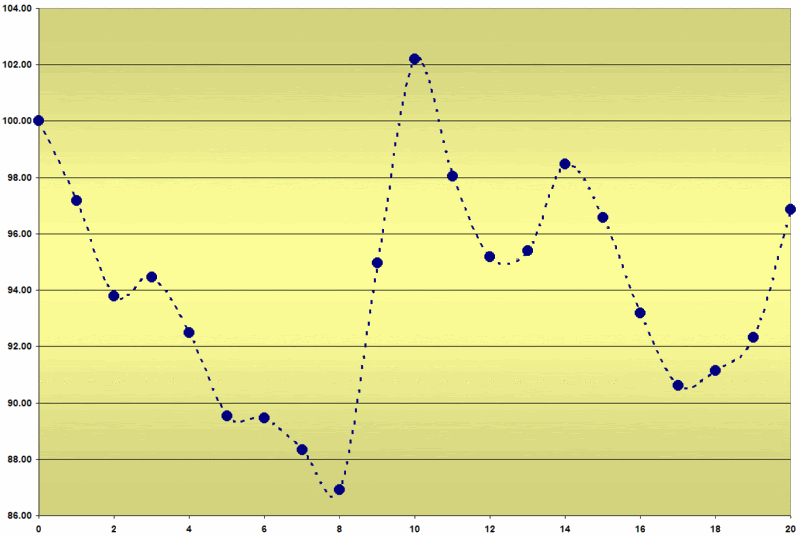Dogs and Earthquakes: Dueling Metaphors?
While talking about my dog as a volatility laboratory has probably been the most fun I have had writing on this blog to date, there is another volatility metaphor that should be kept top of mind as well: earthquakes.
Living in the San Francisco Bay Area, earthquakes are something I am forced to think about from time to time, whether I like it or not. A little known fact is that approximately a half dozen small earthquakes are recorded here every day. Something on the order of 99% of these are not felt by humans and are picked up only by seismographs.
 On those rare occasions when I feel an earthquake, my second thought (the first one being whether I should start hedging my real estate investments with CME real estate futures) is one of relief that an earthquake has reduced some of the stress along a nearby fault. Without getting too deeply into the relevant seismology, it is generally accepted that stress builds up along faults as a result of plate tectonics, which describe the movements of the earth’s crust. Since that stress can only be relieved through the forces released by an earthquake, if earthquakes are too few and far between, the pressure on the fault builds up and scientists start worrying about an increased likelihood of The Big One.
On those rare occasions when I feel an earthquake, my second thought (the first one being whether I should start hedging my real estate investments with CME real estate futures) is one of relief that an earthquake has reduced some of the stress along a nearby fault. Without getting too deeply into the relevant seismology, it is generally accepted that stress builds up along faults as a result of plate tectonics, which describe the movements of the earth’s crust. Since that stress can only be relieved through the forces released by an earthquake, if earthquakes are too few and far between, the pressure on the fault builds up and scientists start worrying about an increased likelihood of The Big One.
In much the same way scientists worry about large earthquakes in the absence of smaller ones, many investors should worry about the increased likelihood of a large VIX spike in the absence of smaller ones. This same line of thinking, which I happen to agree with, would dictate that we should have been particularly concerned because the Dow had gone a record 949 straight sessions (almost four years) without a single day drop of 2% or more. More stress on the investment fault had clearly been building up below the surface, increasing the likelihood of not just a 2% drop, but also of a 3% or 4% one day drop – which is part of the reason that Tuesday’s selloff was so sharp.
Those who are paying attention may wonder if we can have it both ways: can my dog and plate tectonics both explain volatility? My dog would suggest that volatility clusters and trends. Plate tectonics suggests that volatility oscillates.
In fact, volatility clusters and trends in the short term in the same manner that large earthquakes sometimes trigger secondary earthquakes (aka “aftershocks” – akin to echo volatility) and are preceded by smaller earthquakes that are helpful in predicting large earthquakes. Over the longer term, however, my dog goes back to sleep, stress on the fault is relieved and volatility reverts to the mean – until the pressure on the fault starts to build up again and the cycle is repeated.




